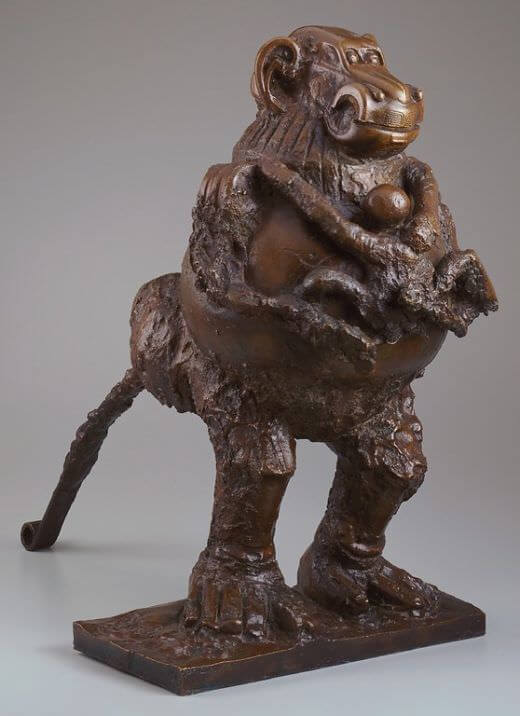Baboon and Young, 1951 by Pablo Picasso

Baboon and Young shows Picasso's power of metaphorical transformation at its height. In the original assemblage from which this bronze baboon was cast, her face was formed from two toy cars - one upright, the other turned upside down - that Picasso had borrowed from his son Claude, and her tail was an automobile spring. The baboon's ears were made from cup handles, and her round belly was a large jug whose handles form the shape of her shoulders.
Pablo Picasso was always innovative in his approach to art, regardless of the medium in which he was working. As a sculptor, Picasso pioneered the technique of assemblage, constructing works partly or entirely of "found" objects, both natural and man-made. In Baboon and Young, the artist used toy automobiles, a storage jar, and a car spring to create a playful image of motherhood. The two metal cars, undersides together, are the baboon's head; the round earthenware pot, with its high handles, makes up her torso and shoulders; and the curving steel spring forms her backbone and long tail. The rest of her body and the figure of her child were modeled from clay, and the whole piece was cast in bronze.
















